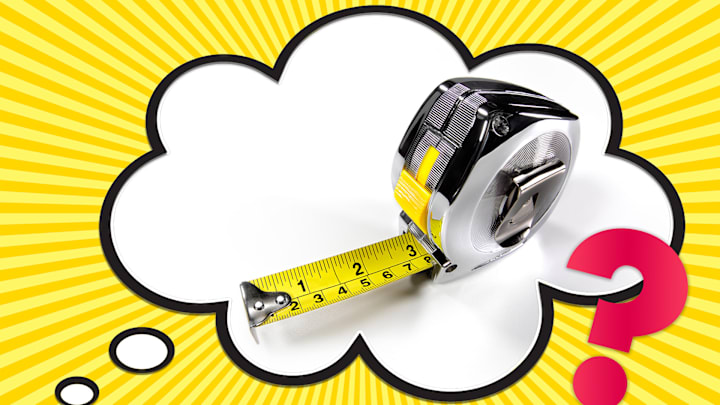If you take a close look at your tape measure, perhaps after you’ve failed to convince yourself you’ve measured something correctly, you might notice the hook at its end is loose. But don’t worry—you don’t need to run to the nearest hardware store to buy a new tool. The little hook at the end of your measuring tape is supposed to be a bit wiggly. Here’s why.
The measuring tape’s metal end is designed to be slightly loose, as the movement allows for accurate interior and exterior measurements. Neither the metal piece nor its intended wiggle will give you a false measurement. The tool’s design incorporates the hook’s thickness: Take a good look at the start of your tape measure, and you’ll realize it’s actually 1/16th of an inch short. That 1/16th of an inch accounts for the width of the metal hook.
The thickness of the hook won’t affect how accurate your numbers are, whether it’s inside or outside the object being measured. When you’re measuring the outside of an object, the hook slides out so its length won’t be included in your calculations. Then, when measuring the interior of a space, like the inside of a window frame or doorframe, the hook is pushed in, making sure the measurement starts from the end of the tape.
A Brief History of the Tape Measure
The version of the tape measure people are most familiar with can be traced back to Alvin J. Fellows of New Haven, Connecticut; he’s the one who came up with the design for a spring-loaded, locking tool.
Though Fellows may have perfected the design, he wasn’t the first to create it. The tools were initially used as a way to make the best of leftover scrap metal made for hoop skirts. When the skirts left the fashion scene in the 1800s, British metalworker James Chesterman took that flat metal and decided to use it as a way to mark measurements.
Various people came up with their own versions of the tool over the following decades, but Fellows was the first to make significant improvements and create a model similar to the one professional contractors and DIY enthusiasts use today.
Read More Secret Uses for Everyday Objects:
Have you got a Big Question you'd like us to answer? If so, let us know by emailing us at bigquestions@mentalfloss.com.
